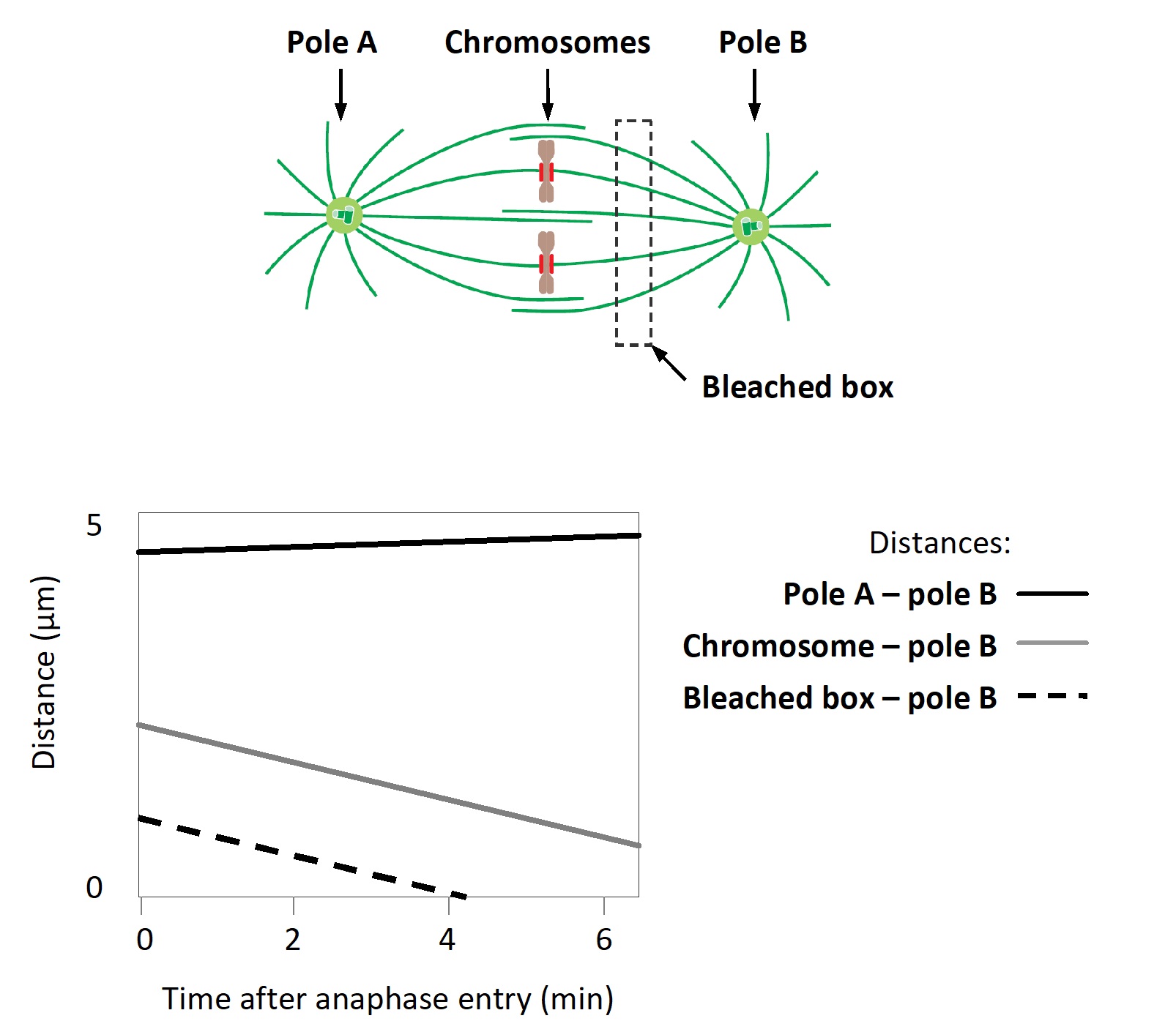To study chromosome movement during anaphase in mammals, you have injected fluorescently labeled tubulin subunits into cells such that microtubules can be seen under a fluorescence microscope. You then use a relatively strong laser beam to bleach the fluorescent dyes in a limited area of a metaphase cell, as indicated in the schematic diagram below, and follow the progression of mitosis under the microscope by time-lapse imaging. You then use the images to measure the change in distance between various components, and plot the results in the graph below. Answer the following question(s) based on these results.

-Based on the results from your experiment, which force is dominant in chromosome movement in this cell: polar ejection force (E), microtubule flux (F), or kinetochore microtubule plus-end depolymerization (P)? Write down E, F, or P as your answer.
Correct Answer:
Verified
View Answer
Unlock this answer now
Get Access to more Verified Answers free of charge
Q33: Three models for contractile-ring positioning in animal
Q34: Indicate whether each of the following, when
Q35: In the following schematic drawing of a
Q36: Three models for contractile-ring positioning in animal
Q37: In most mammalian cells, low M-cyclin protein
Q39: Indicate true (T) and false (F) statements
Q40: In the following schematic diagram of an
Q41: Which of the following cell populations in
Q42: Indicate true (T) and false (F) statements
Q43: Which one better supports cell proliferation when
Unlock this Answer For Free Now!
View this answer and more for free by performing one of the following actions

Scan the QR code to install the App and get 2 free unlocks

Unlock quizzes for free by uploading documents